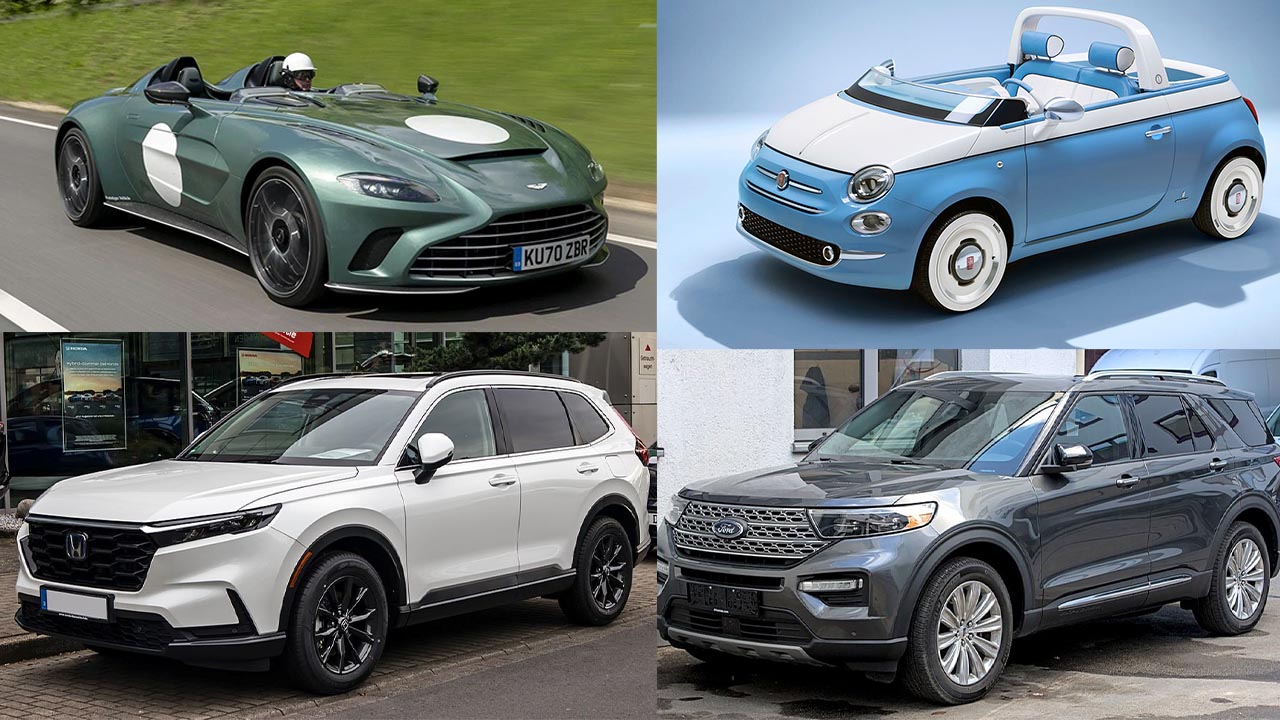Driving during the rainy season presents a unique set of challenges, including slippery roads, reduced visibility, and a higher likelihood of accidents.
Selecting the appropriate vehicle for such conditions is essential to maintain both safety and comfort. In this article, we will take a closer look at the 5 best cars that excel in rainy weather.
These vehicles are known for their outstanding traction, advanced safety technologies, and dependable performance in wet and slippery environments.
Cars That Are Built for Rainy Seasons
1. Subaru Outback
The Subaru Outback stands out as one of the top vehicles for driving in rainy conditions. It comes equipped with all-wheel drive (AWD), which provides enhanced grip and stability when navigating wet or slick roads.
Subaru’s Symmetrical AWD system distributes power evenly to all four wheels, helping to minimize the chances of hydroplaning.
The vehicle also features a high ground clearance, which helps prevent water damage when driving through flooded areas. Additionally, it includes X-Mode, a system designed to improve performance on slippery surfaces by optimizing engine output and braking.
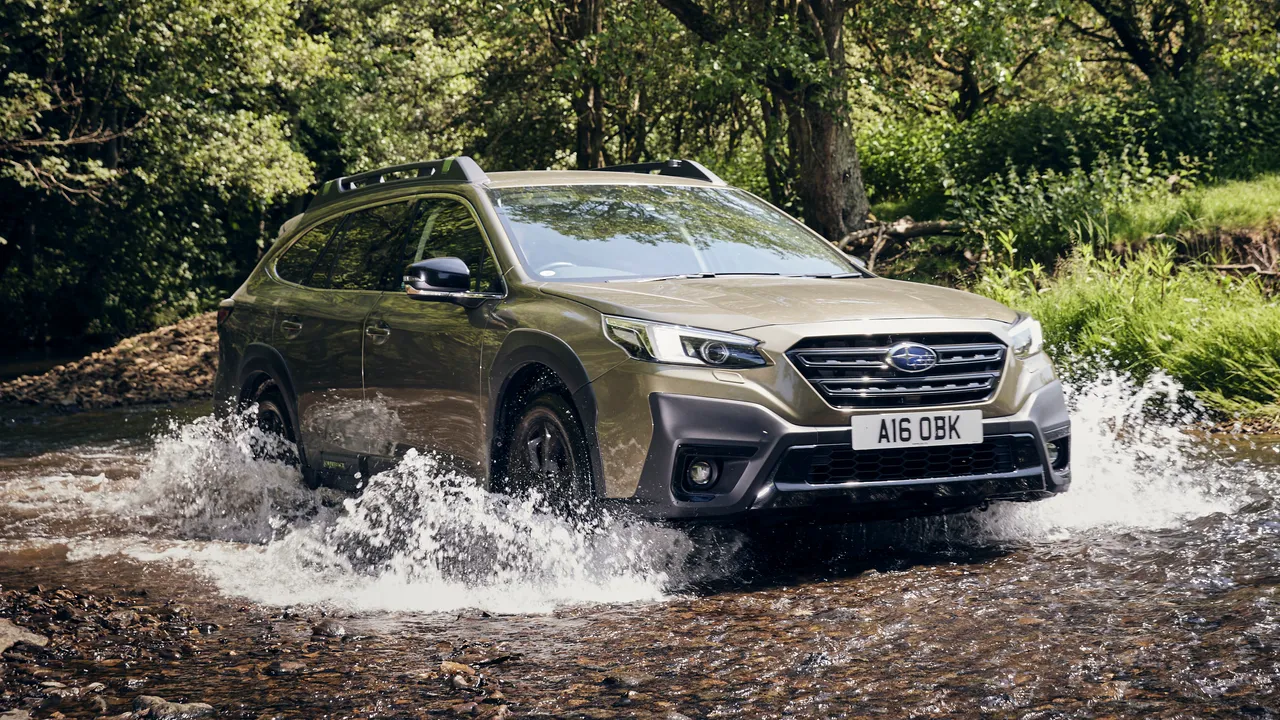
Advanced safety features such as the EyeSight Driver Assist technology further enhance the vehicle’s ability to keep occupants safe in adverse weather.
Thanks to its durable design and robust safety capabilities, the Subaru Outback proves to be a dependable option for safely getting through heavy rainfall and waterlogged roads.
2. Toyota RAV4
The Toyota RAV4 is a compact SUV that delivers outstanding handling in wet weather conditions. Equipped with Toyota’s Dynamic Torque Vectoring AWD system, it maintains stability even on slick and slippery surfaces.
Features such as Rain-Sensing Windshield Wipers and Blind-Spot Monitoring enhance both safety and visibility during rainy drives.
The Dynamic Torque Vectoring AWD system provides improved traction by directing power where it’s needed most, while the rain-sensing wipers automatically adjust to changing precipitation levels for better visibility.
Blind-Spot Monitoring adds an extra layer of safety by assisting with safer lane changes. Additionally, the RAV4’s high ground clearance allows it to navigate waterlogged streets more effectively.
For those seeking a reliable and fuel-efficient vehicle to tackle the challenges of the rainy season, the Toyota RAV4 is an excellent option.
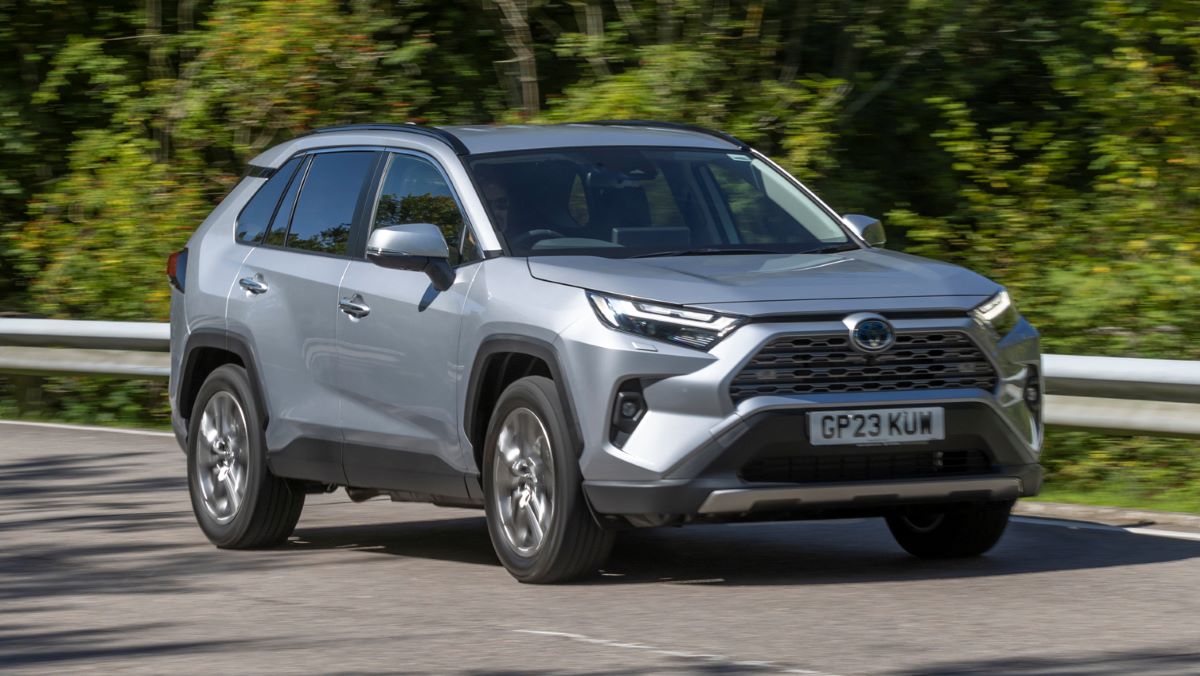
SUVs are often labeled as gas-guzzling, planet-polluting vehicles, right? Well, not the Toyota RAV4 – it actually emits less CO₂ than some smaller cars. We’re not joking.
According to official data, the RAV4 is genuinely one of the most efficient family SUVs you can buy. That’s largely due to its petrol plug-in hybrid setup, as Toyota has now discontinued the standard hybrid version.
In Toyota’s lineup, the RAV4 is positioned above the Toyota C-HR and just below the rugged Toyota Land Cruiser, and it shares many similarities with the Suzuki Across. Despite its size, it doesn’t come with a seven-seat option.
When considering rivals, the RAV4 competes with popular models like the Ford Kuga, Hyundai Tucson, Kia Sportage, and Volkswagen Tiguan. It also faces newer competition from lesser-known models such as the BYD Seal U, Jaecoo 7, and MG HS.
The Toyota RAV4’s plug-in hybrid engine makes it a wise choice for company car users, and its impressive fuel economy, solid resale values, and excellent reliability record make it equally appealing to private buyers.
If you’re planning to buy one, we suggest choosing the Design trim, which comes equipped with all the essentials.
Among its major strengths are its impressive frugality, low predicted depreciation, and strong reliability. However, the infotainment system is a letdown, some competitors are better to drive, and there’s no seven-seat version available.
Pricing starts at around £40,215, with leasing estimates beginning at approximately £407 per month.
Some versions are available immediately, with current listings showing prices from £42,439. Our recommended pick is the Toyota RAV4 2.5 PHEV Design 5dr CVT, which strikes a great balance of features and performance.
Under the hood, the RAV4 combines a 2.5-litre petrol engine with two electric motors, delivering four-wheel drive and a total output of 302bhp. This allows for an official 0–62mph time of 6.0 seconds.
That makes it slightly quicker than PHEV versions of the MG HS and Range Rover Evoque, and significantly faster than most competitors, including the Ford Kuga PHEV and Honda CR-V PHEV.
It can also reach motorway speeds using electric power alone, and during testing, it managed over 30 miles of electric-only driving.
Toyota claims a maximum of 46 miles is possible, which outpaces the Kuga and Evoque PHEVs – although both the MG HS and VW Tiguan PHEVs officially manage more than 70 miles on a full charge.
In city driving, the RAV4’s ride is more comfortable than that of the Kuga PHEV, and it handles vertical movement better than the Jaecoo 7. However, its suspension doesn’t settle as well at higher speeds.
While not uncomfortable, the RAV4 tends to thump over potholes and motorway joints more than you’d expect, making it less composed than models like the Hyundai Tucson, Kia Sportage, or Range Rover Evoque.
When it comes to handling, plug-in hybrids often suffer from the extra weight of their battery packs, and the RAV4 is no exception.That said, its light steering makes it easy to manoeuvre in tight spaces, and it controls body roll well at lower speeds.
However, as speed builds, it starts to feel a bit top-heavy compared to the Sportage and lacks the grip and precision steering of the Kuga and Evoque. Even so, the RAV4 feels more stable and controlled than the Jaecoo 7 and BYD Seal U.
Noise and vibration are areas where the RAV4 could improve. When accelerating hard, the petrol engine revs loudly – a result of its CVT automatic gearbox – and the noise only subsides once you ease off.
This creates a less relaxing driving experience, as the engine sounds harsh and transmits vibrations through the pedals and floor.
In addition, road and wind noise are more noticeable than in most rivals, which might lead you to increase the radio volume at motorway speeds. On the plus side, the RAV4 is far quieter at lower speeds when operating in pure electric mode.
A regenerative braking system helps recharge the battery as the car slows, but pressing the brake pedal often results in a grabby response. Until you get used to it, modulating your braking to achieve a smooth stop can be tricky.
3. Honda CR-V
The Honda CR-V is a well-regarded option for drivers who seek a combination of comfort, fuel efficiency, and safety when driving in rainy conditions.
It features Real Time AWD with an Intelligent Control System, which delivers power to the rear wheels when necessary, helping to minimize skidding and enhance traction on wet roads.
The vehicle is also equipped with the Honda Sensing Safety Suite, which includes advanced features like the Collision Mitigation Braking System for added protection.
Traction Control further aids in preventing wheel slippage, offering more stability in slippery situations. Additionally, the CR-V boasts a spacious and comfortable interior, making it ideal for long journeys during bad weather.
Overall, the Honda CR-V is a solid choice for families and commuters who often find themselves driving through rain.
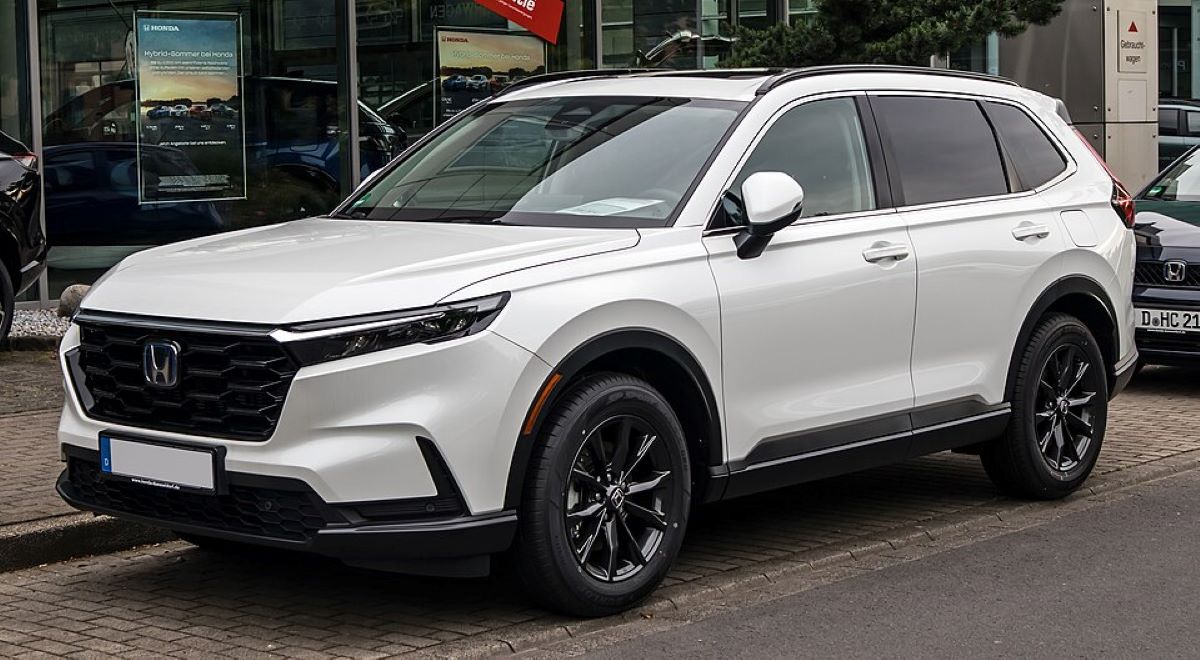
The Honda CR-V has long been recognized as a top pick among compact SUVs, praised for its blend of practicality, fuel efficiency, and refinement. The latest iteration, the CR-V Hybrid, takes that winning combination to new heights.
It offers more power and improved fuel economy compared to the standard nonhybrid CR-V, with the only trade-off being a modest reduction in cargo space due to the hybrid battery’s placement.
Front-wheel drive comes standard on the hybrid version, which has received an EPA combined fuel economy rating of 40 mpg—an impressive achievement for a vehicle that offers this much passenger and cargo capacity. Even with all-wheel drive, the CR-V Hybrid remains efficient, earning a 37 mpg combined rating.
All models in the CR-V Hybrid range include “Sport” in their name, and the lineup consists of the Sport, Sport-L, and Sport Touring trim levels. As a standout option in its class, the Honda CR-V Hybrid also secures a spot for 2025.
For the 2025 model year, there are no changes to the CR-V Hybrid lineup. Pricing starts at $36,045 for the base Sport trim and goes up to $42,495 for the top-tier Sport Touring, depending on options.
While the fully loaded Sport Touring trim offers an extensive list of features, its higher price tag might be difficult to justify.
Instead, the front-wheel-drive Sport-L is a smart recommendation, providing added equipment over the Sport trim at a good value. The FWD Sport-L is also rated at 40 mpg combined by the EPA.
For those considering all-wheel drive, it is a $1500 option on both the Sport and Sport-L trims, while it comes standard on the Sport Touring. However, note that adding AWD reduces the combined fuel economy rating to 37 mpg.
The hybrid powertrain in the CR-V pairs a 2.0-liter four-cylinder engine with two electric motors to generate a total of 204 horsepower—14 horsepower more than the standard nonhybrid CR-V’s output of 190 horsepower.
This setup delivers a smooth, quiet, and satisfying driving experience, even if it isn’t particularly fast. The Sport Hybrid can be configured with either front- or all-wheel drive, though the Sport Touring Hybrid comes exclusively with AWD.
While the CR-V Hybrid doesn’t match the engaging handling characteristics found in the Mazda CX-50 or the Volkswagen Tiguan, it compensates with a comfortable ride and enough performance to keep the driving experience from becoming dull.
4. Ford Explorer
The Ford Explorer is an outstanding option for those in need of a powerful and spacious SUV capable of handling rainy conditions. Its Intelligent 4WD system automatically adjusts torque distribution to maintain stability on slippery roads.
The vehicle also includes a Terrain Management System, allowing drivers to switch to Rain/Snow mode for improved handling during adverse weather.
Key features like Intelligent 4WD ensure superior road grip, while Rain/Snow mode enhances the vehicle’s ability to navigate wet and slick surfaces.
Additionally, AdvanceTrac with Roll Stability Control contributes to overall safety by helping the driver maintain control in challenging driving situations.
The Ford Explorer also offers a spacious cabin filled with modern technology, ensuring a comfortable and convenient ride. It is an ideal choice for those who need a large and durable vehicle to confidently manage rainy and difficult road conditions.
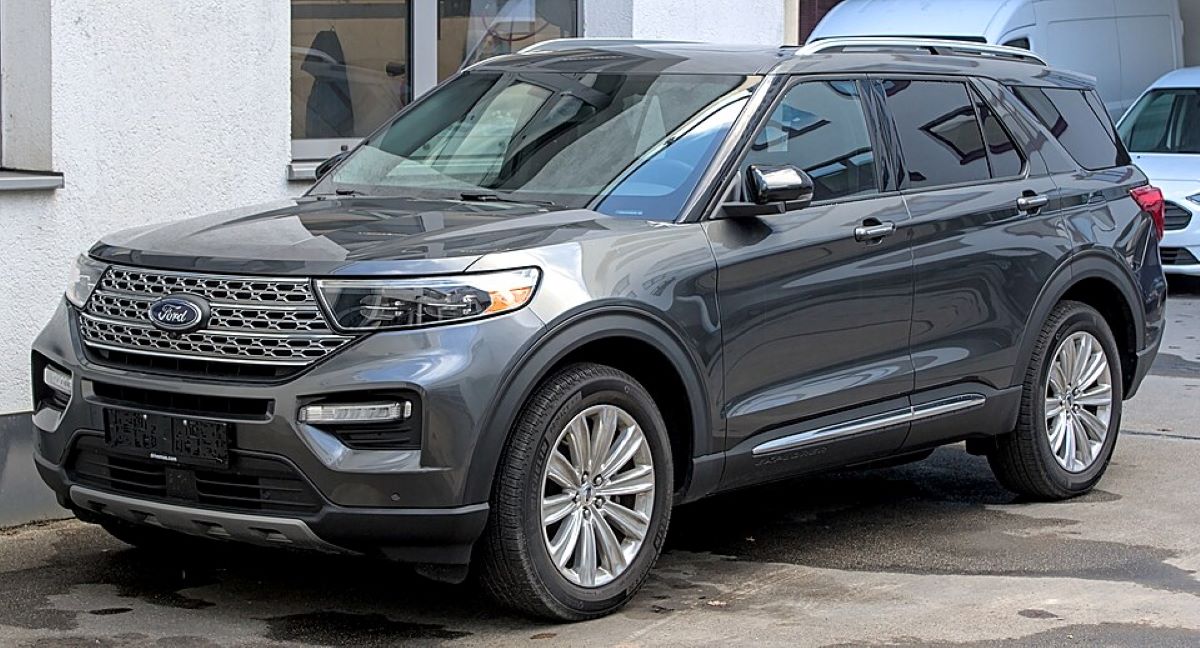
The 2025 Ford Explorer carries forward the legacy of one of America’s most influential SUVs, a name that has been pivotal since the original Explorer helped ignite the nation’s love affair with sport-utility vehicles.
Today’s Explorer, a three-row midsize SUV, is built on a rear-wheel-drive platform—a rare setup in its segment—that contributes to its notably athletic handling compared to the many front-wheel-drive-based competitors.
For the 2025 model year, Ford has turned its focus to the interior, addressing some of the vehicle’s most pressing issues, particularly in terms of design and functionality.
Over the years, Gall has written and edited thousands of pieces covering car reviews, technology, industry trends, and notable figures.
Among the strengths of the 2025 Explorer are its powerful engines that deliver quick acceleration, secure and confident handling, and a rich suite of technology and driver-assistance features.
On the flip side, its second- and third-row seating is less spacious than many rivals, and its headline driver-assist feature—Ford’s hands-free BlueCruise—is only accessible via a paid subscription.
For this model year, Ford has introduced several key updates: refreshed front and rear styling, a redesigned interior that includes a Google-based infotainment system, and the availability of BlueCruise on ST-Line, ST, and Platinum trims.
These changes build on the sixth-generation Explorer that first launched in 2020.
The new interior significantly improves upon the previous version’s shortcomings. It now includes a standard 12.3-inch digital instrument cluster, complemented by a new 13.2-inch touchscreen running the Ford Digital Experience infotainment system.
This Android-based setup supports wireless Android Auto and Apple CarPlay, and it integrates Google Maps and Google Assistant for voice commands. BlueCruise, Ford’s advanced hands-free highway driving feature, is now available but not included by default.
Users must subscribe at $75 per month, $800 annually, or $2,100 for three years—an extra cost that may turn off some buyers. To help differentiate trim levels, Ford has also introduced new standard interior color schemes.
When comparing fuel costs, the Explorer Active with a 2.3-liter turbocharged four-cylinder engine and 10-speed automatic transmission costs approximately $162 per month to drive, based on an annual mileage of 15,000 and North Dakota’s regular unleaded price of $3.13 per gallon.
For context, the average cost to drive a large SUV in similar conditions is about $226 per month. These estimates are based on a driving mix of 55% city and 45% highway.
Of course, the Explorer continues to face tough competition in the crowded midsize SUV space it helped create. While its handling is more engaging than most in its class, rivals like the Kia Telluride and Hyundai Palisade offer more spacious and luxurious interiors.
And for families who also want driving enjoyment, the Mazda CX-90 is a standout that deserves serious consideration.
5. Mazda CX-5
The Mazda CX-5 is a stylish and dependable SUV that delivers strong performance in wet weather conditions. It features Mazda’s i-Activ AWD system, which continuously monitors road conditions and adjusts torque distribution in real time to maintain optimal traction.
The G-Vectoring Control Plus (GVC+) system enhances stability when navigating turns on wet roads, providing a smoother and more controlled driving experience.
Additional features such as rain-sensing windshield wipers improve visibility during downpours, while Smart Brake Support helps prevent collisions by automatically applying the brakes when a potential impact is detected.
For drivers seeking a balanced combination of performance, safety, and style, the Mazda CX-5 is a great option for tackling the challenges of the rainy season.
The 2025 Mazda CX-5 continues to prove why it remains the brand’s best-selling model, even as it approaches a decade since its debut.
With a stylish design inside and out, the CX-5 stands out for its engaging driving dynamics, which don’t come at the cost of passenger comfort. It delivers a refined experience that rivals more upscale competitors in the compact SUV segment.
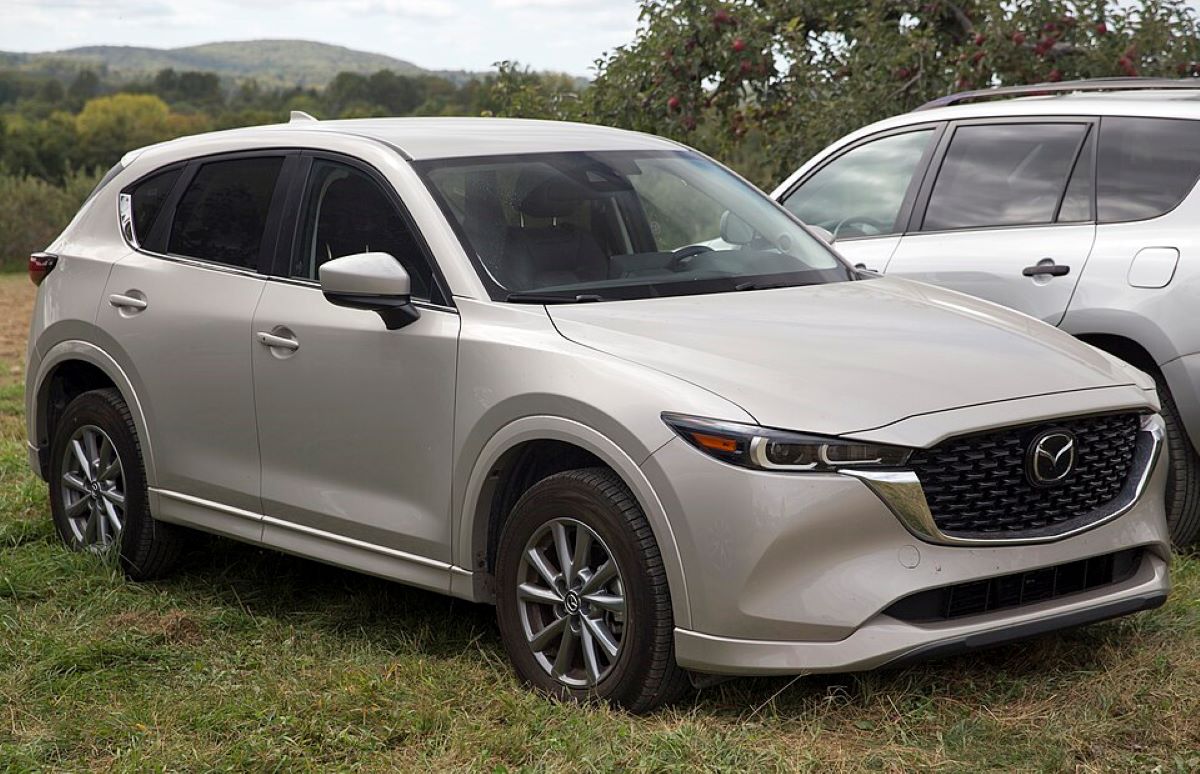
Higher trims come equipped with an impressive list of technology and comfort features that could easily be mistaken for those found in luxury vehicles.
Though the ride leans a bit firm compared to others in the class, and rear legroom and cargo space fall short of some rivals, the CX-5 remains a compelling choice.
The base engine offers underwhelming acceleration, but the optional turbocharged version provides strong performance for those who want more power. Notably, it is also impressively quiet at highway speeds.
New for 2025, the entry-level 2.5 S trim level now brings the starting price of the CX-5 below $30,000.
The 2.5 S Premium trim has been dropped from the lineup, and the Carbon Edition model now features wireless smartphone charging and connectivity. The 2025 CX-5 is part of the second generation that was first introduced in 2017.
When it comes to fuel costs, the 2025 Mazda CX-5 2.5 S AWD, with its 2.5-liter four-cylinder engine and six-speed automatic transmission, is estimated to cost around $152 per month to drive based on 15,000 miles per year with a 55% city and 45% highway mix, assuming regular unleaded fuel at $3.13 per gallon in North Dakota.
This is lower than the average monthly cost of $176 for midsize SUVs under similar conditions.
In comparison between the CX-5 and its in-house sibling, the CX-50, both models offer compelling features. They share the same standard and available engines, have similar size and pricing, and offer overlapping features.
One might assume that, following Mazda’s strategy of replacing the CX-9 with the CX-90 and the CX-3 with the CX-30, the CX-50 was meant to replace the CX-5. However, the CX-5 still outsells the newer CX-50 by nearly 2-to-1 and holds its place as the company’s best-selling vehicle overall.
Both the CX-5 and CX-50 are excellent compact SUVs, and shoppers can feel confident choosing either without the fear of missing out—Mazda is simply fortunate to have two strong contenders in the same segment.
Beyond the internal competition, the CX-5 faces a variety of solid choices in the compact SUV category.
Also Read: Top 10 High-Performance Automatic Cars of 2025
Cars Don’t Drive in Rain
1. Fiat 500 Spiaggina
This is precisely the kind of car you’d want if you reside in the more exclusive areas of the Cote d’Azur, where sunshine is practically guaranteed or your income tax money returned.
The Spiaggina pays homage to a 1958 version of the original Fiat 500, though with a touch more luxury.
While the original model lacked doors and featured only short pieces of rope, reminiscent of a children’s fairground ride, the 2018 edition comes with cork flooring and even includes a shower for rinsing off after a swim.
The esteemed Italian coachbuilder Castagna Milano has recently focused its craftsmanship on Fiat’s diminutive new Topolino, an adorably compact electric vehicle derived from the Citroën Ami quadricycle.
While both original models are bursting with charm, Castagna Milano has elevated the design to new heights by incorporating intricate details inspired by the iconic Fiat 500 Jolly of the 1950s. The result is a tailor-made electric beach car, purpose-built for quiet and stylish coastal cruising.
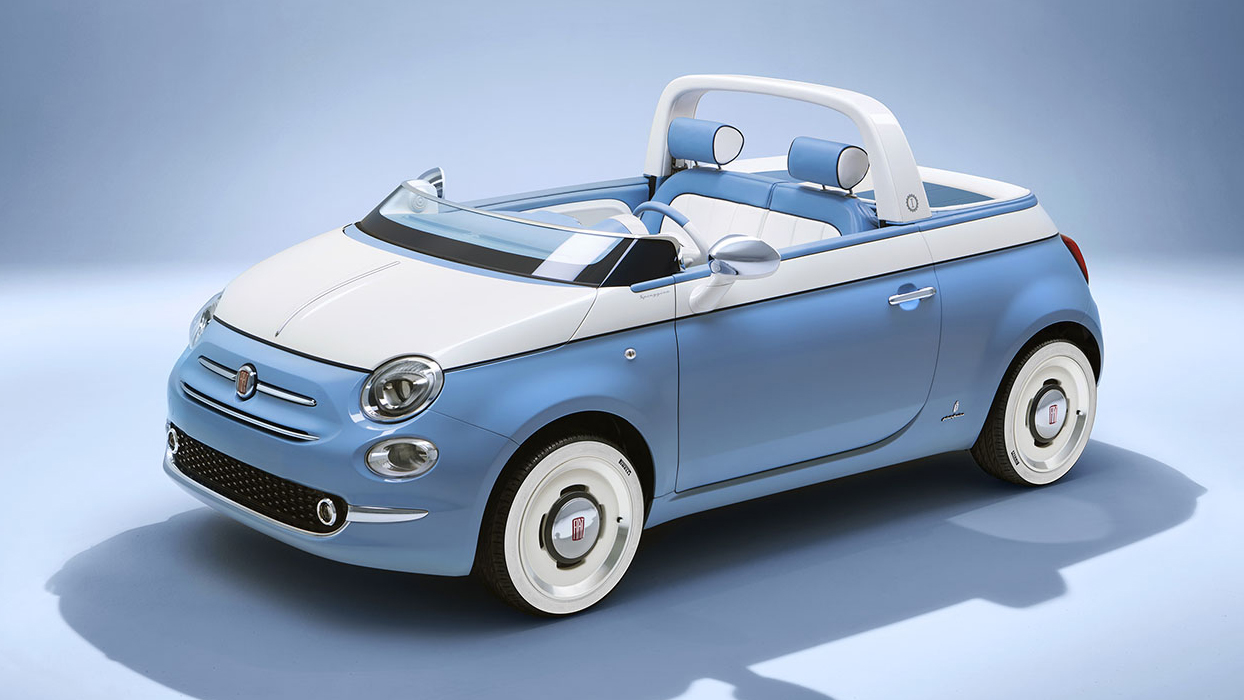
The original Jolly was a Fiat 500 reimagined as a featherweight leisure vehicle at the request of Fiat CEO Gianni Agnelli, who wanted something aesthetically compatible with his family’s 82-foot yacht, Agneta.
For their version, Castagna Milano extended the Topolino slightly to create additional storage room, blending vintage spirit with modern function. The vehicle evokes the original Jolly, which was produced by Ghia and featured signature elements like a striped canvas roof and wicker seats.
That version became a cult classic, with only about 400 units built, inspiring contemporaries such as the whimsical Vignale Gamine and the Bonacina Spiaggina, the latter featuring seats crafted from woven rattan by the iconic furniture maker.
Building on their tradition of luxurious reinterpretations, Castagna Milano’s Spiaggina combines the rattan-inspired aesthetics of Bonacina with a nautical flair reminiscent of Riva yachts and other high-end Mediterranean leisure craft.
It features accents like teak and chrome finishes, a striped fabric roof, and seat inserts that imitate the texture of the original wicker.
For those needing a bit more practicality, the company offers an extended version of the Topolino that adds 30 centimeters in length, transforming the compact two-seater into a more usable runabout with a longer rear deck and added compartments for cargo.
This isn’t Castagna Milano’s first venture into bespoke compact vehicles. In previous years, the company has applied its signature transformations to models like the modern Fiat 500—with a Riva yacht-inspired edition—and even the Mini.
However, the Topolino represents the smallest platform the firm has worked with so far, making it a unique and technically ambitious project.
For those seeking a different interpretation of Riviera flair with electric performance, another option exists.
Garage Italia Customs, founded in 2017 by Fiat heir Lapo Elkann, offers a distinct retro-styled electric ride in the form of a fully customized original Fiat 500. The Fiat 500 Spiaggina by Garage Italia Customs merges nostalgic design with modern upgrades.
It features a fully electric powertrain, a digitally reimagined minimalist instrument panel, and newly crafted components, all coming together in a four-seater package that blends heritage with innovation.
2. McLaren Elva
The Elva was introduced by McLaren as a tribute to the open-topped racing cars of the Sixties that were beloved by the company’s founder, Bruce McLaren.
However, in reality, it’s more of a homage to the 249 high-net-worth individuals around the globe who are willing to pay £1.4 million each and help sustain operations in Woking.
Initially, the plan was to produce a limited run of 399 cars, but as more manufacturers began releasing million-pound roadsters, the strategy evolved.
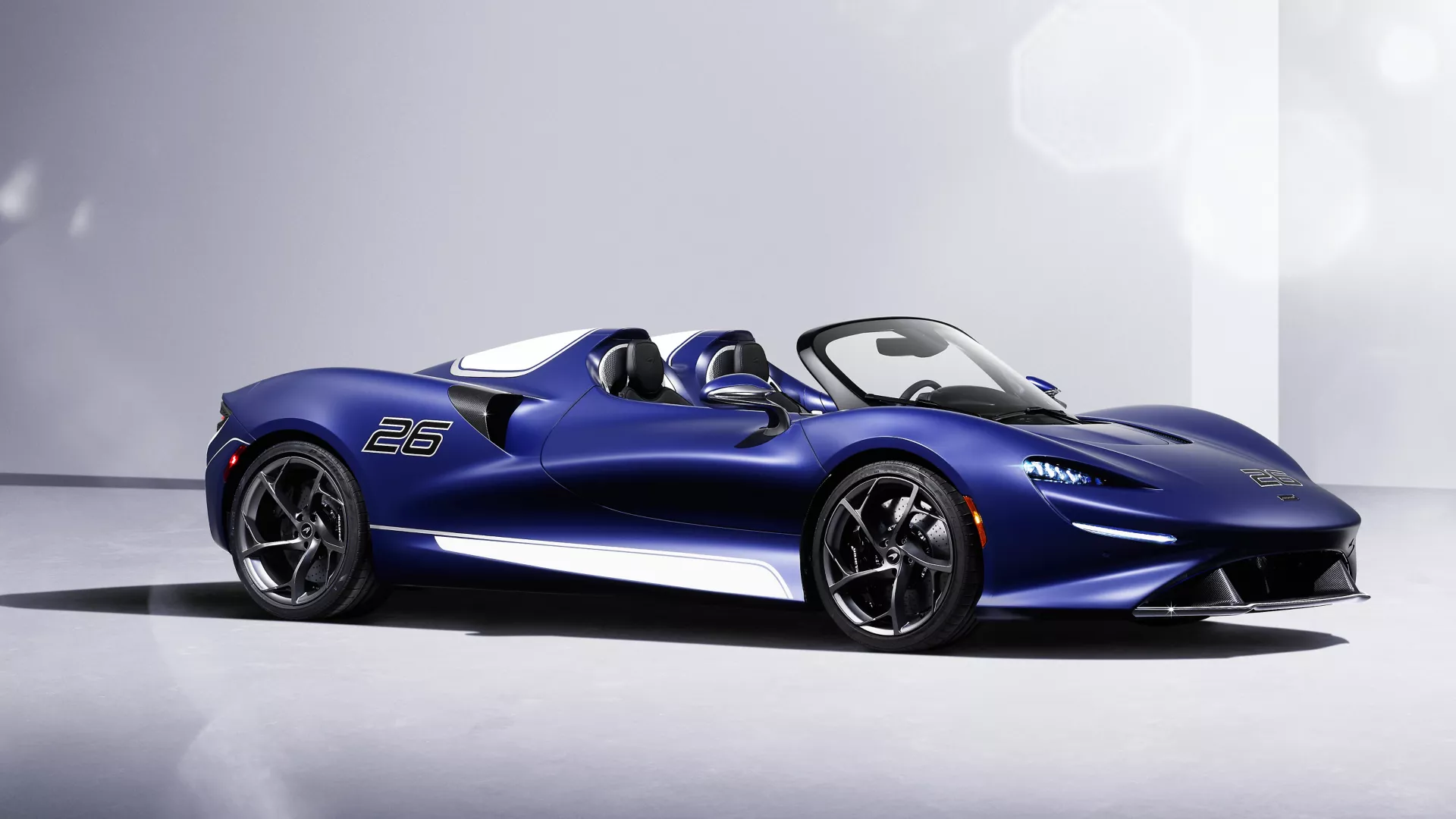
A car’s windshield typically serves to protect passengers from the rush of wind and potentially harmful debris, but the McLaren Elva takes a different approach by removing this barrier entirely, offering the most unfiltered driving experience possible.
In place of a traditional windshield, McLaren has incorporated an innovative feature that channels air over the topless design, helping to shield passengers from the elements while still prioritizing the driving experience.
The Elva’s core purpose is to immerse the driver in a truly pure connection to the road.
This is made possible by its mid-mounted 804-hp twin-turbo V-8 engine, which expels exhaust through four distinct barrels, creating a sound and power that are as exhilarating as they are distinctive.
When paired with a lightweight carbon-fiber body, the Elva stands out as one of the fastest and most performance-oriented vehicles on the market today.
While its primary focus is on speed and driver engagement, the 2021 Elva is also a visually stunning machine that rivals other windscreen-less hypercars, including the Ferrari Monza and Aston Martin V12 Speedster.
3. Aston Martin V12 Speedster
While a 5.2-litre twin-turbo V12 engine producing 700bhp and 555lb ft of torque is undoubtedly impressive, the standout feature of the Aston Martin V12 Speedster is its Batmobile-style split cockpit.
This is a twin roadster, as opposed to a double. Perhaps most remarkable, though, is its £765,000 price tag, which, when compared to some of the other exclusive vehicles on our list, is considered an absolute bargain.
The perspective you take really depends on where you fall on the scale of cynicism.
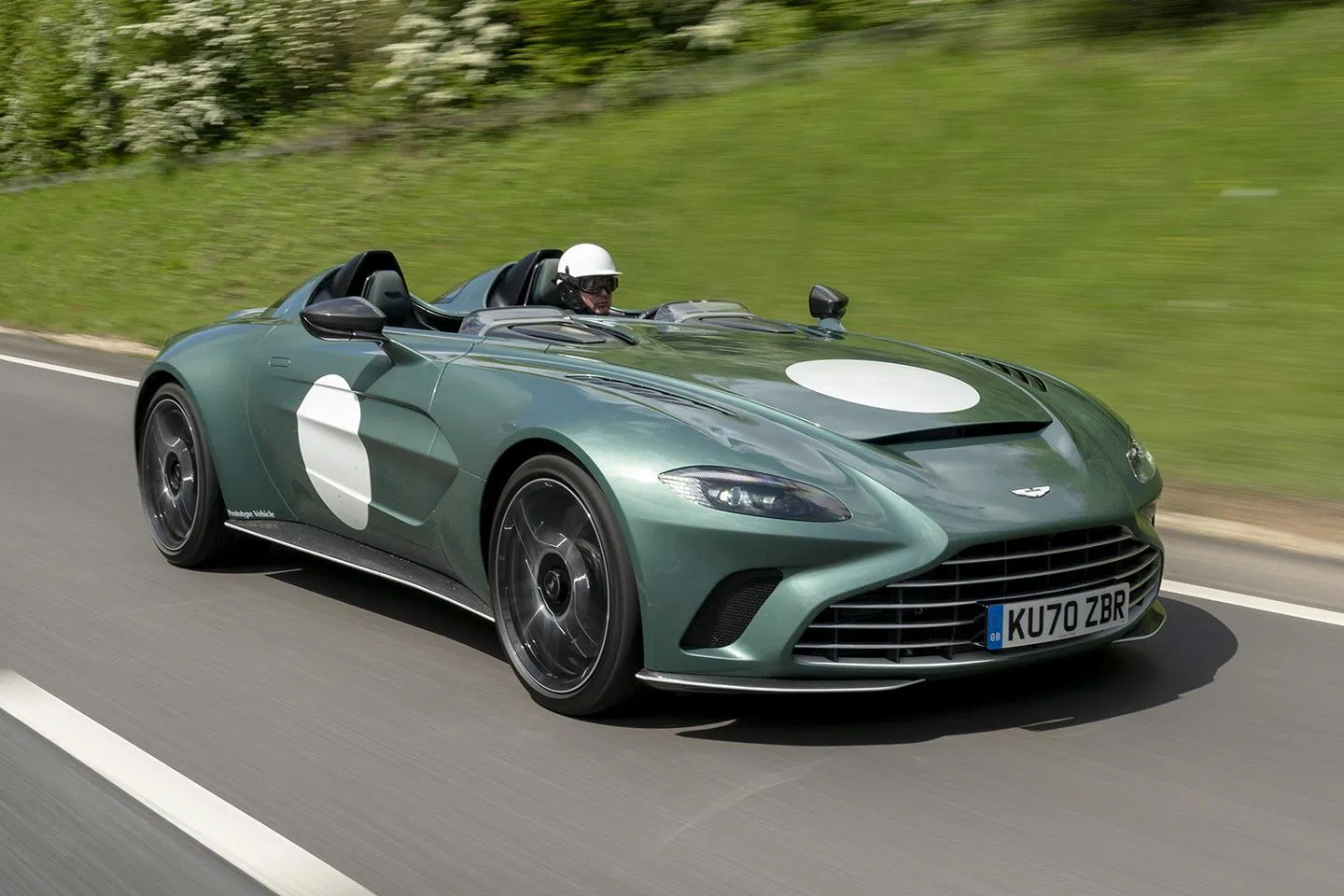
If you’re Aston Martin, the V12 Speedster is nothing short of the most thrilling, unapologetically bold, and completely over-the-top car the company has ever crafted — at least until the Valkyrie finally arrives.
For those who are serial hypercar collectors, this car is your next open-air vehicle to add to your collection, perfectly complementing your Ferrari Monza, McLaren Elva, Bentley Bacalar, and McLaren-Mercedes SLR Stirling Moss.
However, if you’re not part of either of those groups, you might find yourself hard-pressed to take the notion of a 700 horsepower (or more precisely, 691bhp) V12-powered two-seater seriously.
Particularly when it offers less weather protection than a Himalayan goat herder, making it a tough car to justify on any rational grounds.
The V12 Speedster comes with no roof, no option to add one, and no provisions to even attach one.
There are no windows, and rather than a traditional windscreen, each cockpit is shielded from the oncoming wind by nothing more than a glass aero ramp, which looks as though it was borrowed from a First World War biplane.
Also Read: 10 Off-Road Vehicles That Offer Luxury Without Sacrificing Performance
4. Norster 600R
It’s not so much that you’d avoid taking this car out in the rain, but rather that you might prefer not to be seen driving it at all. Finland isn’t exactly renowned for its sports cars, and the Norster first went on sale in 2010.
It stands in stark contrast to every other vehicle on this list, with its charming, almost playful design and a modest 580cc engine.
Technically, it’s a quad bike (don’t ask), and its top speed is limited to just under 60mph.
The Austin-Healey Sprite had plenty of qualities that made it a beloved classic.
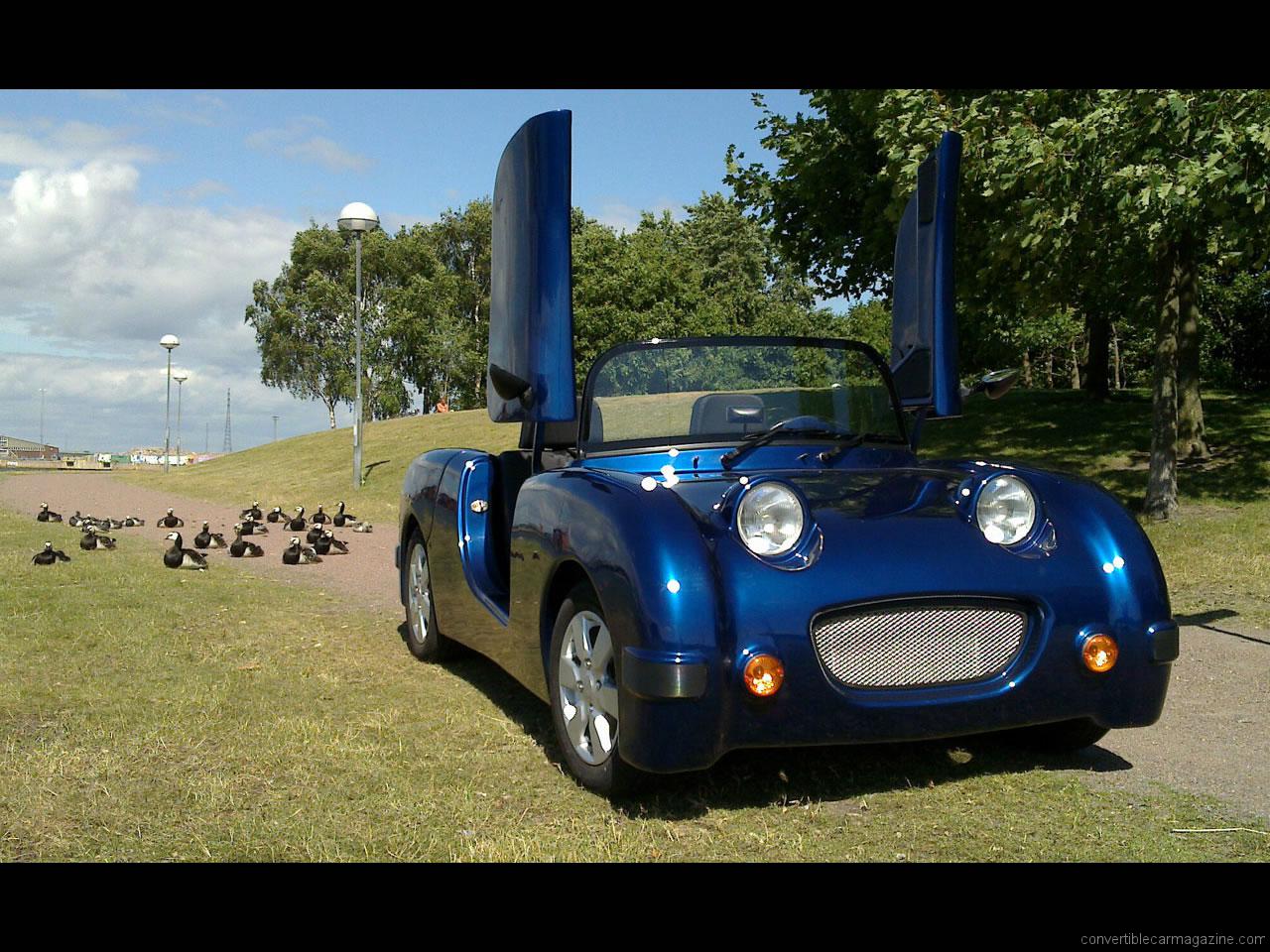
Not only was it incredibly affordable at the time of its debut, but it was also lightweight and capable of out-handling much more expensive sports cars from that era. Its distinctive British styling set it apart from everything else on the road.
This winning combination has made the Sprite Mk 1 a highly sought-after collectible. However, despite its charm, no one had attempted to recreate the car—until now. Enter the Norster 600R.
This rather unique creation doesn’t technically qualify as a car. Instead, it has been classified as a heavy quad within the European Union, allowing it to sidestep issues such as crash test requirements and emissions standards.
Designed by a team of Finnish creators and built in China, the Norster 600R is powered by a 580cc two-cylinder engine that delivers an impressive 20 horsepower and 36.8 pound-feet of torque.
5. Mercedes-Benz SLR Stirling Moss
The 2009 special edition Mercedes-Benz SLR Stirling Moss was designed as a tribute to the legendary driver Stirling Moss, with its roofless design commemorating his victory in the 1955 Mille Miglia driving the 300 SLR roadster.
Powered by a 651bhp engine, this car could reach a top speed of 217mph. Goggles are absolutely essential for anyone brave enough to drive it.
When Mercedes-Benz unveiled the 300 SLR, the company was in need of victories to gain more media attention.
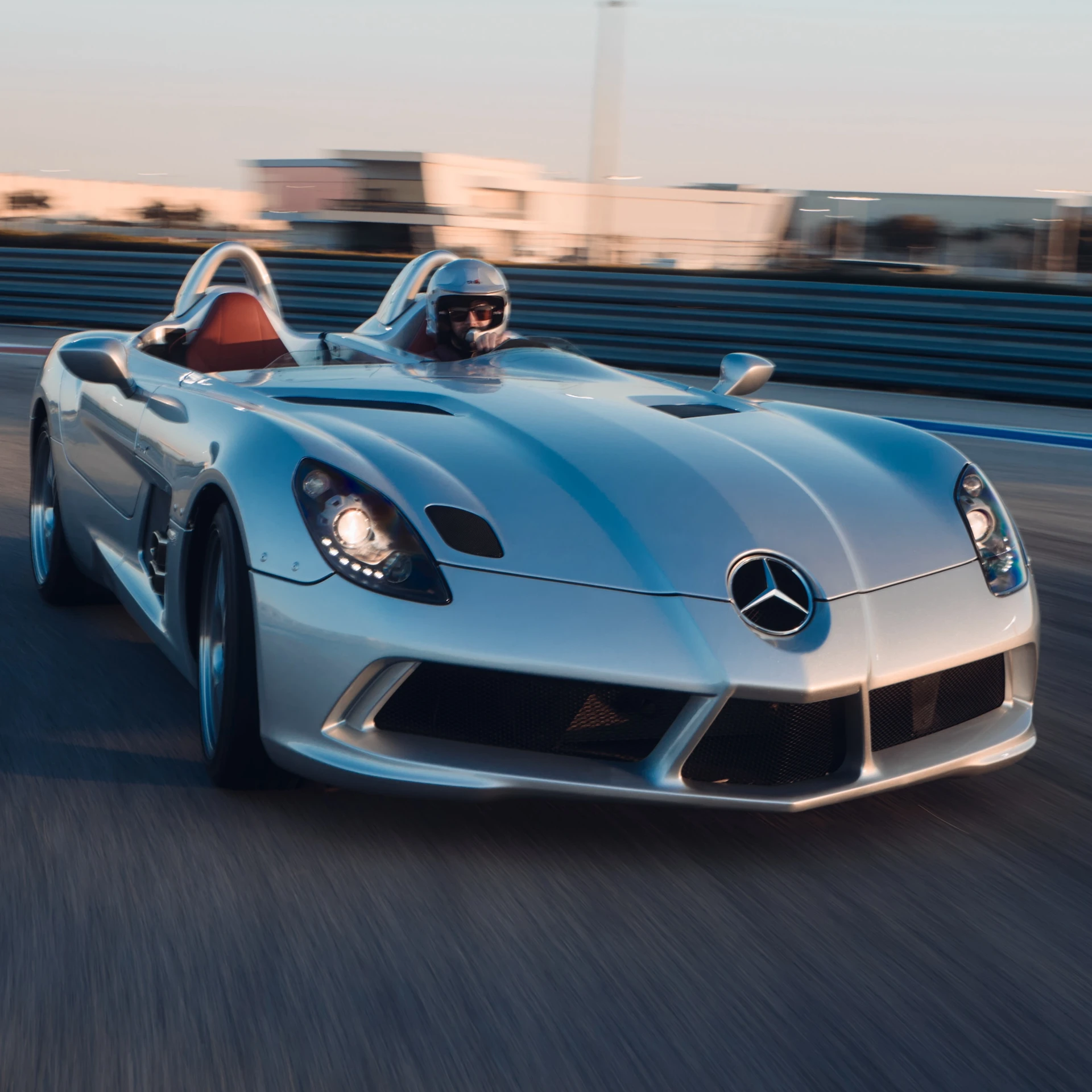
Stirling Moss delivered just that when he claimed victory in the 1955 Mille Miglia while driving the race car for the German automaker. Later in the same year, he repeated this achievement by winning the Targa Florio race.
Sir Stirling Moss was often referred to as “the greatest racing driver that never won a Formula 1 championship.” However, his victories and accomplishments were undeniable, securing his place as one of the greatest drivers in history.
In 2009, Mercedes-Benz honored his legacy by creating a unique roadster: the McLaren SLR Stirling Moss. Sir Moss passed away in 2020, eleven years after the roadster’s release.

